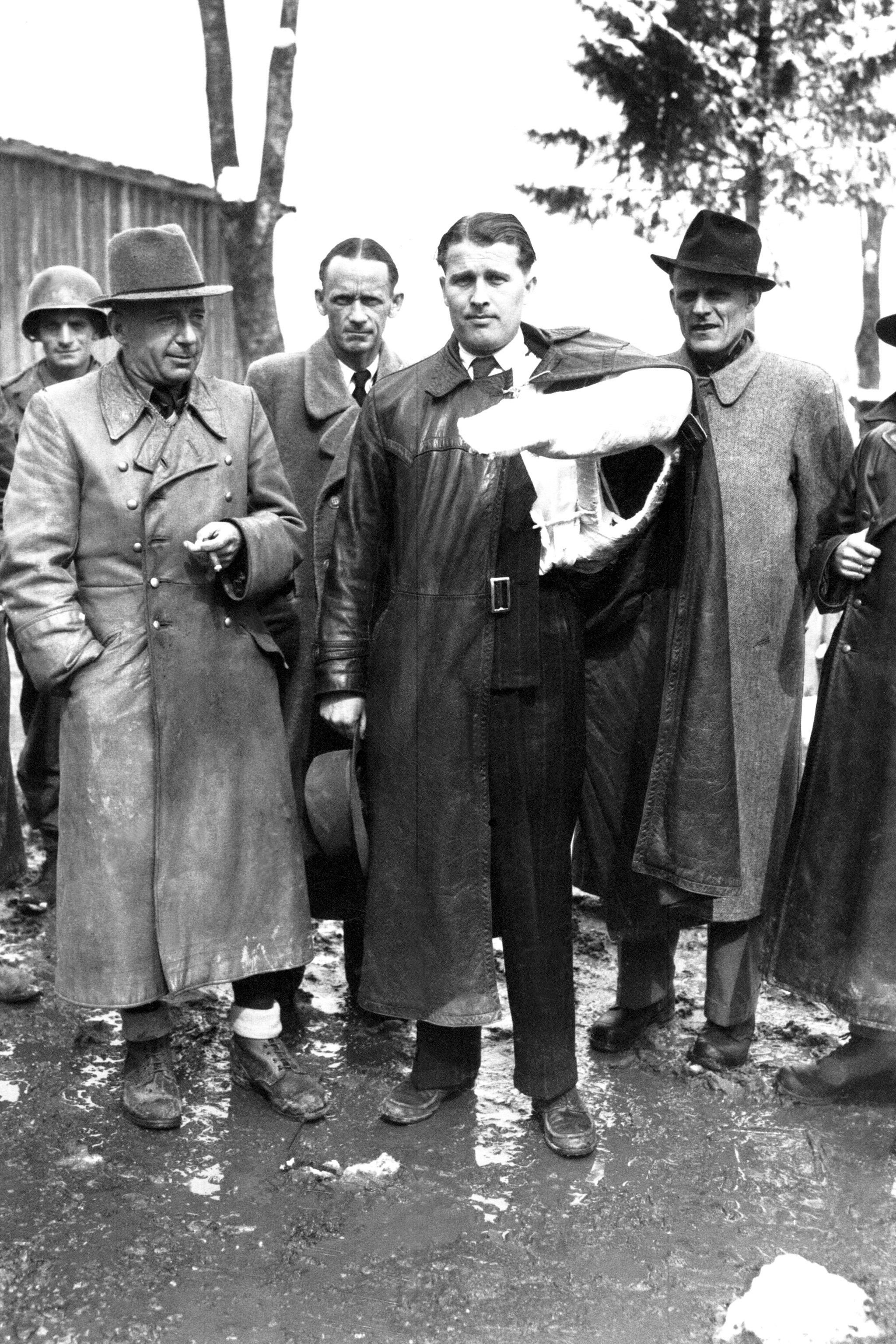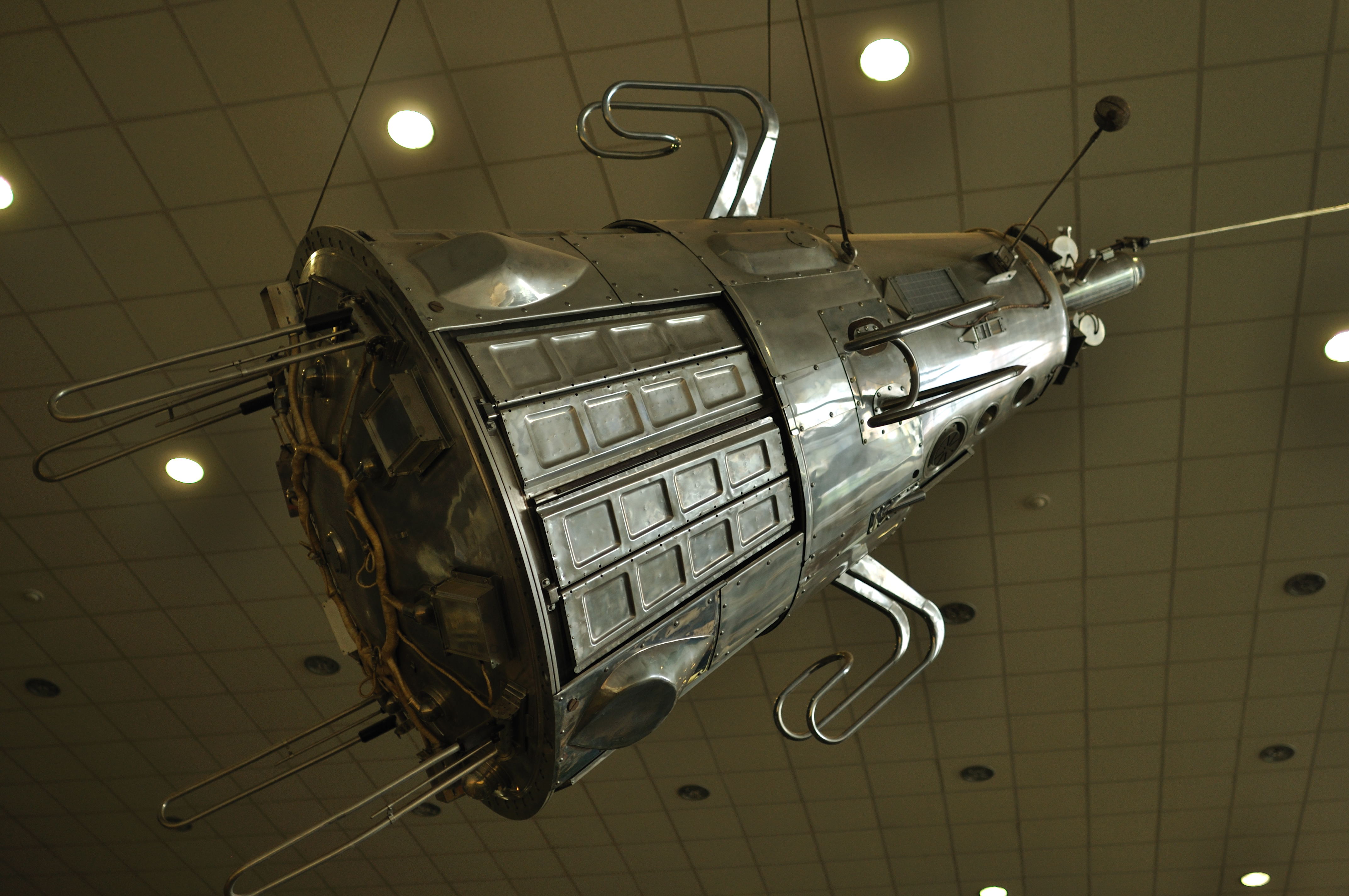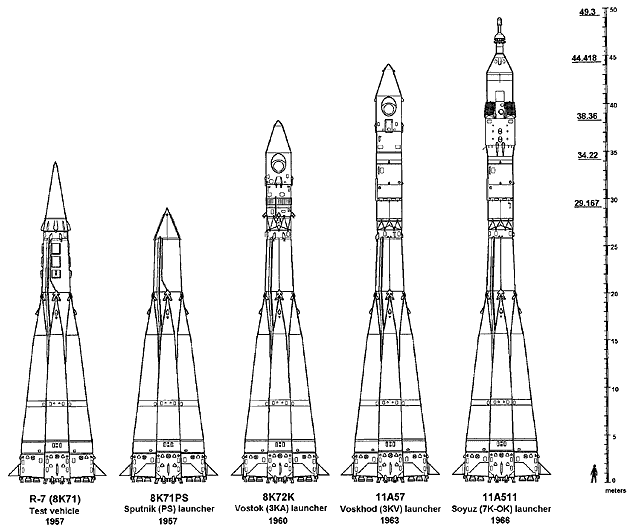The tiny sphere that launched the space race 6 decades ago on 4th October.
When the Soviet Union launched the first artificial satellite 60 years ago, it marked both the beginning of space exploration and the start of a race between Moscow and Washington. Sputnik, the tiny silver sphere with four spider leg-like antennae, showed off Soviet technological prowess.
But German scientists (who had worked on Adolf Hitler's rocket projects and brought to the USSR after the war) were the ones who stood at the forefront of space achievement.
The founder of the Soviet space programme, Sergei Korolyov, worked with German scientists and fragments of the German FAU rocket to develop a new military missile. The Korolyov bureau had to create an intercontinental rocket capable of carrying a hydrogen bomb to any point on the planet.
 |
| Sergei Korolyov |
As he worked for the military, Korolyov (who spent six years in the Gulag) dreamt of space conquest. But time was running out: one of the principal German engineers, Wernher von Braun, was already working for the Americans.
 |
| Wernher Von Braun, with his arm in a cast from a car accident, surrendered to the Americans just before this May 3, 1945 photo. |
After three years of work and three rocket accidents, the fourth R-7 (R-7 is the rocket which put Sputnik into orbit) with a dummy warhead successfully hit its target in Kamchatka, in the Far East, in August 1957. The test was hailed as successful although the rocket head disintegrated in flight.
Creating a new rocket head would take six months, much too long as the Soviets wanted to pre-empt the launch of a US satellite in 1958. So Korolyov suggested creating a simple satellite made of two hemispheres containing sensors, a radio and a battery pack. In just two months, the apparatus measuring 58 centimetres in diameter and weighing 63.8 kilograms was ready.
Though the satellite captured imaginations, Sputnik 1 was secondary to its inventors. The most important thing was that it proved the effectiveness of the R-7 rocket. The secrecy around the project meant that most of the scientists involved didn't learn of the actual launch until they heard on the radio that the first Earth satellite was put in orbit on October 4, 1957 from a testing range in Kazakhstan, the future Baikonur cosmodrome. (1957 was observed as the International Geophysical Year).
It was a tiny dot which shone in the sun because of the glossy surface. The satellite travelled at about 29,000 kilometres per hour (8,100 m/s), taking 96.2 minutes to complete each orbit.
 |
| A replica of Sputnik 1, the first artificial satellite in the world to be put into outer space. |
It transmitted on 20.005 and 40.002 MHz, which were monitored by amateur radio operators throughout the world. The signals continued for 21 days until the transmitter batteries ran out on 26 October 1957. Sputnik was in orbit for 92 days, making 1,440 circles around Earth, before losing speed and burning up in the atmosphere on 4 January 1958.
Tracking and studying Sputnik 1 from Earth provided scientists with valuable information, even though the satellite itself wasn't equipped with sensors. The density of the upper atmosphere could be deduced from its drag on the orbit, and the propagation of its radio signals gave information about the ionosphere.
Nikita Khrushchev, Premier of the Soviet Union, was pleased with the success of Sputnik 1, and encouraged launch of a more sophisticated satellite less than a month later in time for the 40th anniversary of the October Revolution on 3 November.
 |
| Model of Sputnik 2 at the Polytechnic Museum in Moscow |
 |
| Hungarian stamp honouring Laika |
The instrument-laden Sputnik 3 spacecraft was sent into orbit on 15 May 1958. The tape recorder that was to store the data failed after launch. As a result, the discovery and mapping of the Van Allen radiation belts was left to the United States' Explorer 3 and Pioneer 3 satellites.
 |
Sputnik 3
|
Several replicas are now on show in museums. At least two vintage duplicates of Sputnik 1 exist, built apparently as backup units. One resides just outside Moscow in the corporate museum of Energia, the modern descendant of Korolyov's design bureau, where it is on display by appointment only. Another is in the Museum of Flight in Seattle, Washington. Unlike Energia's unit, it has no internal components, but it does have casings and molded fittings inside (as well as evidence of battery wear), which suggest it was built as more than just a model.
Sergei Khrushchev claimed that the Nobel Prize committee attempted to award Korolyov but the award was turned down by Khrushchev in order to maintain harmony within the Council of Chief Designers.
Extract from an article by Marina Lapenkova in Phys.Org and Wikipedia. Images Source - Wikipedia

No comments:
Post a Comment